Recipes
8 Best Marjoram Substitutes That Won’t Undermine The Taste
About Marjoram and Marjoram Substitutes
Marjoram (/ˈmɑːrdʒərəm/;Origanum majorana) is a cold-sensitive perennialherb or undershrub with sweet pine and citrus flavours. In some Middle Eastern countries, marjoram is synonymous with oregano, and there the names sweet marjoram and knotted marjoram are used to distinguish it from other plants of the genus Origanum. It is also called pot marjoram, although this name is also used for other cultivated species of Origanum.
History
Marjoram is indigenous to Cyprus, Turkey, the Mediterranean, Western Asia, the Arabian Peninsula, and the Levant, and was known to the ancient Greeks and Romans as a symbol of happiness. It may have spread to the British Isles during the Middle Ages. Marjoram was not widely used in the United States until after World War II.
The name marjoram (Old French: majorane; Medieval Latin: majorana) does not directly derive from the Latin word maior (major).
Description
Leaves are smooth, simple, petiolated, ovate to oblong-ovate, 0.5–1.5 cm (0.2–0.6 inches) long, 0.2–0.8 cm (0.1–0.3 inches) wide, with obtuse apex, entire margin, symmetrical but tapering base, and reticulate venation. The texture of the leaf is extremely smooth due to the presence of numerous hairs.
Cultivation
Considered a tender perennial (USDA Zones 7–9), marjoram can sometimes prove hardy even in zone 5.
Marjoram is cultivated for its aromatic leaves, either green or dry, for culinary purposes; the tops are cut as the plants begin to flower and are dried slowly in the shade. It is often used in herb combinations such as herbes de Provence and za’atar. The flowering leaves and tops of marjoram are steam-distilled to produce an essential oil that is yellowish in color (darkening to brown as it ages). It has many chemical components, some of which are borneol, camphor, and pinene.
Related species
Oregano (Origanum vulgare), sometimes listed with marjoram as O. majorana, is also called wild marjoram. It is a perennial common in southern Europe and north to Sweden in dry copses and on hedge-banks, with many stout stems 30–80 centimetres (12–31 in) high, bearing short-stalked, somewhat ovate leaves and clusters of purple flowers. It has a stronger flavor than marjoram.
Pot marjoram or Cretan oregano (O. onites) has similar uses to marjoram.
Hardy marjoram or French/Italian/Sicilian marjoram (O. × majoricum), a cross of marjoram with oregano, is much more resistant to cold, but is slightly less sweet.
O. × pulchellum is known as showy marjoram or showy oregano.
Uses
Marjoram is used for seasoning soups, stews, salad dressings, sauces, and herbal teas.
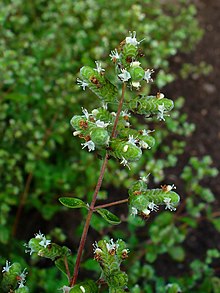
There were days when herbs were used only for medicinal purposes. But it’s better known than ever before, thanks to new and unique cooking methods and world cuisines becoming much more accessible.
Also, due to the revolution in food technology and worldwide cooking competitions, herbs are more of a necessity than just a garden beauty.
Marjoram is one such plant, which is sweeter, woody fragrant than its counterparts, used fresh and dried, and can grow quickly in pots or lawns at home.
But what if the main ingredient in your favorite recipe is marjoram but it’s not available.
What would you do?
Skip this?
If not, you definitely need marjoram substitute, this would be the closest match. (marjoram substitute)
Table of Contents
What is Marjoram?
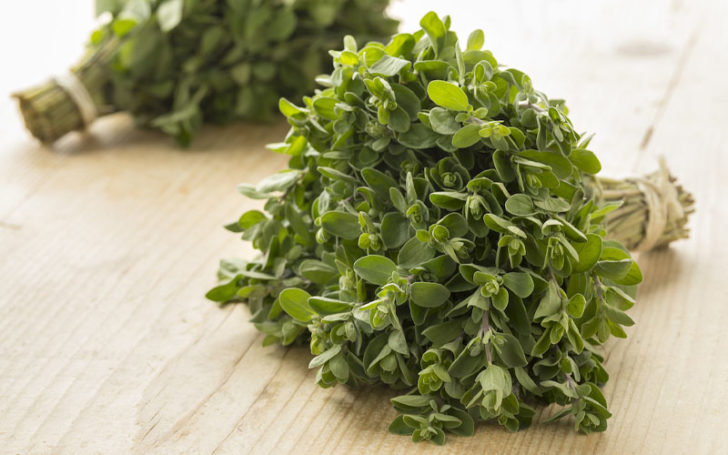
Marjoram is a subtropical, temperate and creeping herb belonging to the mint family, the leaves of which are used for cooking. (marjoram substitute)
Marjoram is an herbal herb commonly found in Mediterranean, North African and North American countries. It is famous worldwide for the widespread use of marjoram in dishes, including pizza. (marjoram substitute)
i. Taxonomic Hierarchy of Marjoram
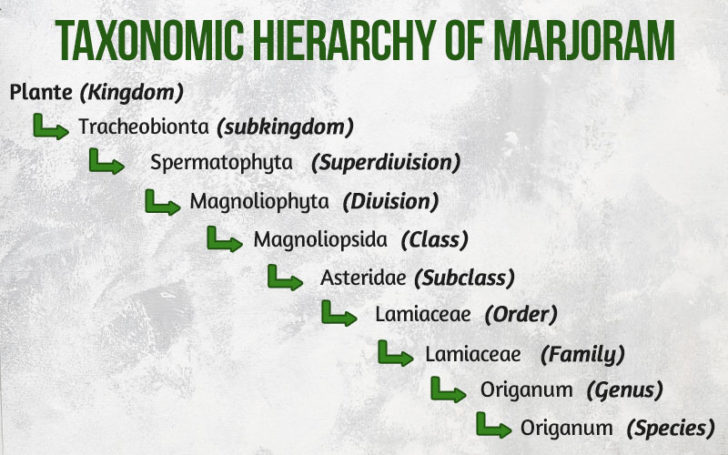
The hierarchy above is a brief overview of the Plant Kingdom, Plantae classification, which ultimately gave rise to the plant Origanum Majorana. (marjoram substitute)
ii. How does Marjoram Taste like?
The flavor is floral, woody and slightly citrusy. Although it tastes like Thyme, Marjoram is sweeter than Thyme. The aroma compounds found in it are sabinene, terpinene and linalool. (marjoram substitute)
iii. How does marjoram look like?
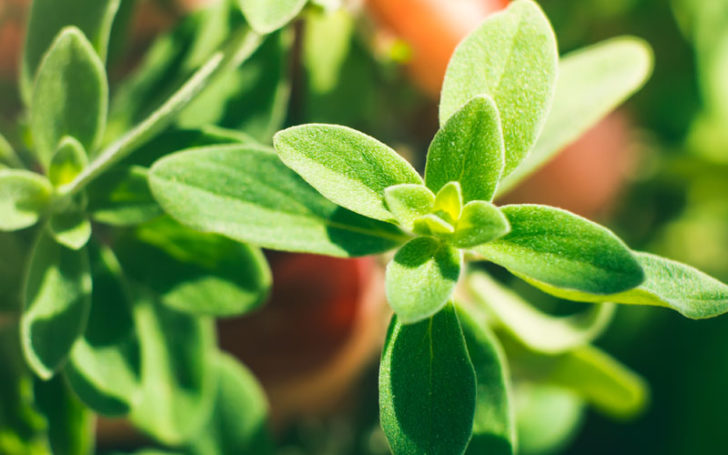
Unlike thyme, this herb is creeping; tends to grow horizontally rather than vertically. It has small stems, oval-shaped green leaves and white flowers. (marjoram substitute)
iv. What is marjoram used for?
Fresh marjoram is used in egg and vegetable dishes, salad dressings, different types of soups, chicken, salmon and other pickles.
Its traditional use is still common today; that is, medicine is made from marjoram leaves and flowers to treat seasonal flu and infections. (marjoram substitute)
v. Marjoram vs. Oregano
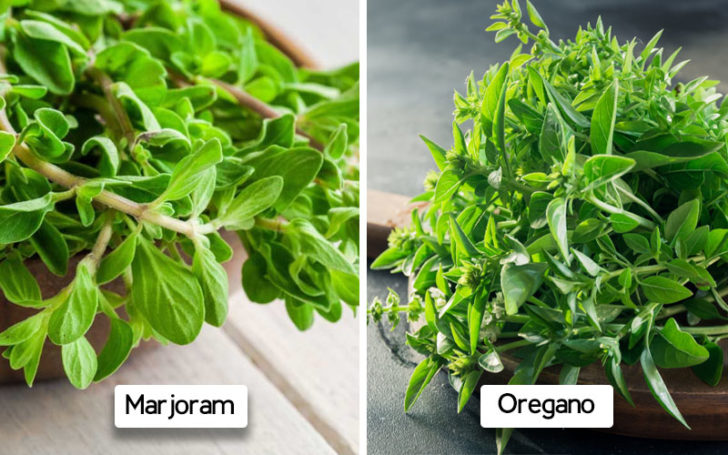
We usually mix marjoram with thyme. Although both belong to the same class and genus yet, they are two completely different species.
- Marjoram plant tends to be an ivy with stems twisting downward, whereas thyme stems are erect.
- Thyme leaves are larger and longer, while marjoram has smaller leaves with thick stems.
- Thyme is slightly bitter, while marjoram is sweeter and more delicate.
- Marjoram has small white flowers growing at the end of the stem while thyme has purple flowers. (marjoram substitute)
Do You Know?
Marjoram was used as antivenom for snake bites by ancient Greeks
What are the possible Marjoram substitutes?
Although marjoram is perineal, you may not find it on the market year-round, especially if you didn’t keep it when you bought it last time.
So, what are you going to do if you’re going to make a dish with marjoram as the main ingredient? Of course, you will try to find the closest marjoram substitute that will almost make up for the flavor you will get with marjoram.
It is worth noting that when we say fresh here, we mean that it has not yet been collected in its original green form or has been stored for no more than 24-48 hours.
When we say dried, it is the same herb but naturally dried like tea leaves, retaining almost the same taste for cooking and without fear of spoilage after months.
Many of these substitutes can be grown quickly at home or in kitchens that do not require the special tools used for gardening.
So let’s take a quick look at possible marjoram substitutes, or to put it another way, the following list will answer your question ‘what else can I use instead of marjoram’? (marjoram substitute)
1. Oregano
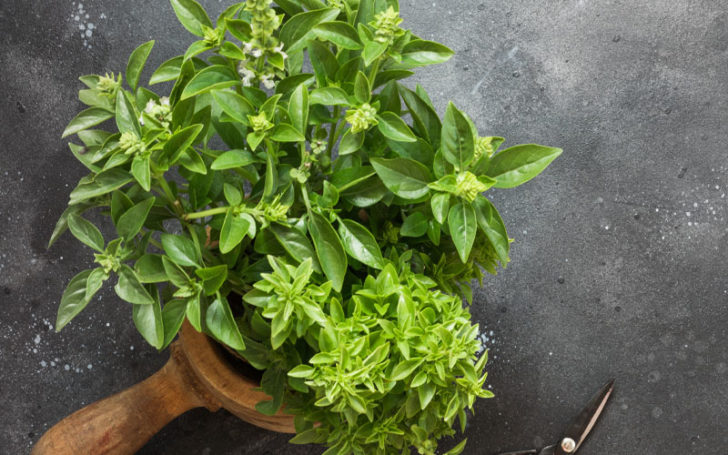
Thyme is the closest marjoram substitute, as they both belong to the same genus and family, and vice versa. In countries surrounding the Medtreanioan, thyme is called wild marjoram for its large leaves. That is why they are often confused with each other.
It depends on whether your recipe calls for dried marjoram or a fresher one, as thyme is equally beneficial in both cases.
How Much Orgenao Is Required As A Marjoram Substitute
Because Thyme is more bitter than Marjoram, a smaller amount of Thyme, such as 2/3, is considered an equivalent match. Cooks also recommend that you always start using the substitute with half the amount of the original ingredient and continue adding gradually until the desired flavor is achieved.
It should be noted here that thyme may not give all its flavor at once, so keep checking 2-3 times after adding it. This rule applies especially to slow-cooked dishes. (marjoram substitute)
2. Basil
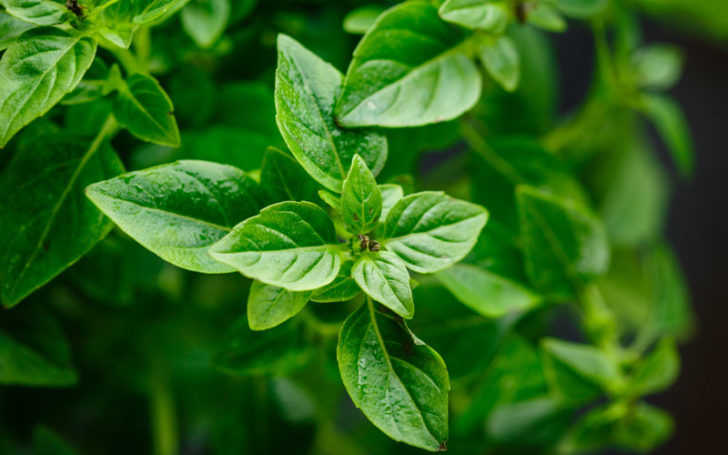
Basil also belongs to the mint family Lamiaceae. But unlike marjoram, Basil belongs to the genus Ocimum.
Basil, which is highly aromatic, is a little different from marjoram. In its fresh form, it tastes a little spicy, so you should consider this fact when substituting marjoram.
However, since you are replacing a sweeter ingredient with a slightly spicy one, it is recommended to use it in its dried form to avoid a significant change in taste.
How Much Basil Is Necessary as a Marjoram Substitute?
Although it is a little spicy when cooking, if you have marjoram, it is recommended to use as much basil as you would use. It’s a good idea to use it in pasta sauce or casseroles. (marjoram substitute)
3. Thyme
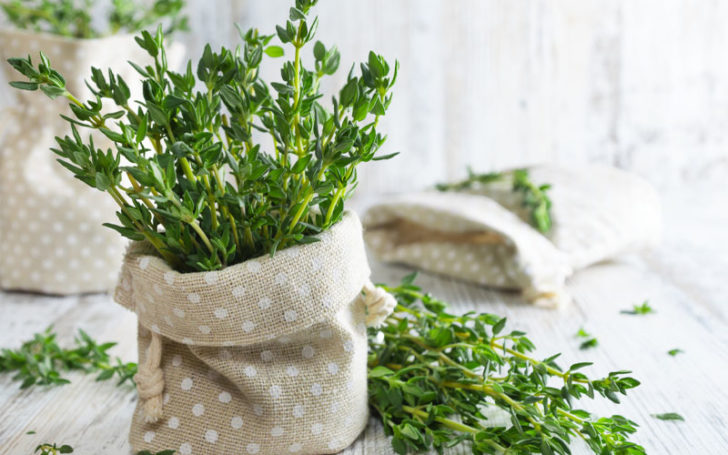
Thyme is another member of the mint family. It is quite common in certain European cuisines. The famous spice mix, herbes de Provence, is complete without Thyme.
It can be used both fresh and dried. Thanks to its earthy and slightly sweet taste, it is the right alternative to marjoram. So you can use marjoram instead of thyme.
Daily recipes include Lemon Thyme Chicken, Garlic Thyme Chicken, etc.
How Much Thyme Is Necessary As A Marjoram Substitute?
There are hundreds of varieties of thyme produced, among which English and French are common. Because of the sweet taste of thyme, the exact amount you need for marjoram is recommended. (marjoram substitute)
4. Lemon Thyme
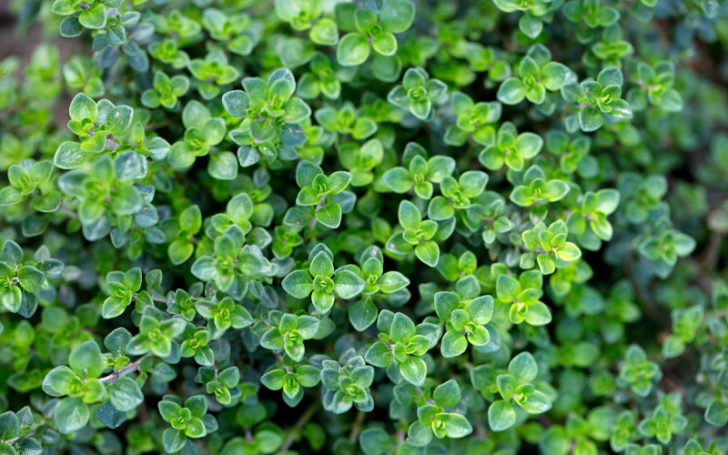
Lemon thyme is another perennial herb from the mint family, famous for its lemon scent thanks to the presence of limonene and thymol.
It is found in Italy, Southern France, Spain, and a few countries in North Africa.
It is used in marinated chicken and fish, but is also popular in fresh salads.
How Much Lemon Thyme Is Necessary as a Marjoram Substitute?
Recipes that call for marjoram with lemon can be easily replaced with Lemon Thyme. Since marjoram tastes sweeter than Lemon thyme, it is recommended to use half or more than 3/4 of the required amount of marjoram.
5. Tarragon
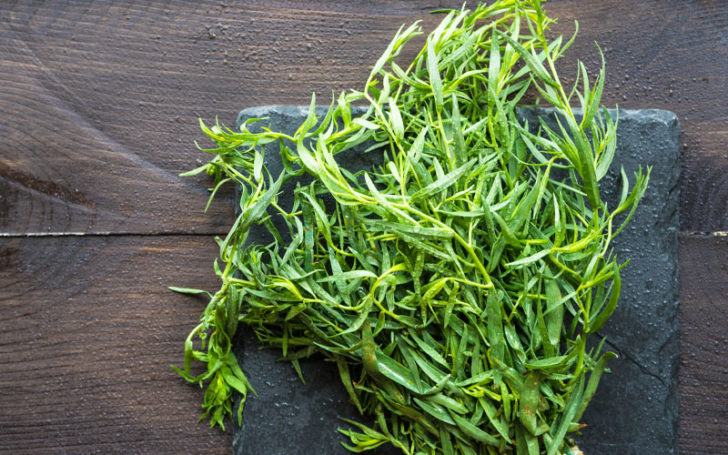
Tarragon, also known as dragon grass, is a similar herb commonly used in French cuisines. It tastes slightly bittersweet, more like fennel. Both French and Russian Tarragons are famous.
Dried Tarragon smells like dill, with a hint of black pepper and lemon. Fresh Tarragon, obtained from the French garden, is aromatic like its anise-like counterparts. Russian Tarragon is more grass-like as it is less aromatic.
Tarragon, which has an aromatic feature and a similar taste, can also be used as a Marjoram Substitute.
How Much Tarragon Is Necessary As A Marjoram Substitute?
You need tarragon exactly in the amount your recipe requires for marjoram.
6. Sage
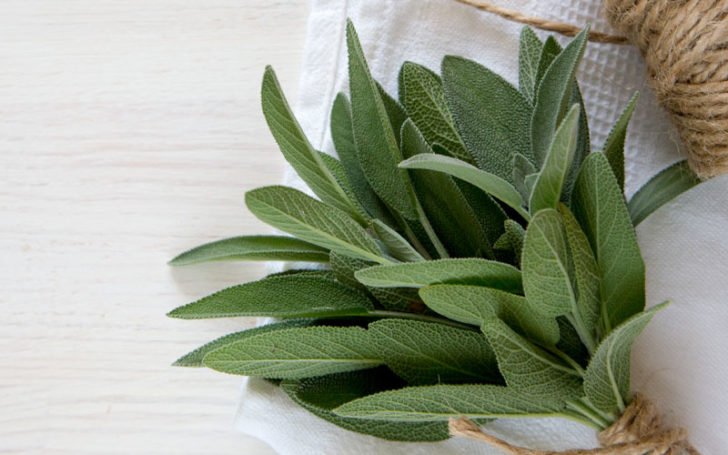
Another from the mint family is Sage. Like all the other great substitutes for marjoram we’ve mentioned, sage is a good replacement for marjoram.
It has a sweet but salty taste. Heavy meals such as sausages, smoked meats, stuffing, pasta can be made delicious from Sage. But if you don’t have sage either, you can use any of the sage substitutes.
They can be used for the same dishes as they both share the same taste. Ten thin leaves of fresh sage will equal 3/4 teaspoon of dried sage spice. So, dried or fresh – the choice is yours.
How Much Sage Is Required as a Marjoram Substitute?
Your recipe calls for marjoram, but if you don’t have it, don’t worry because your dish will be equally delicious with Sage. Its sweet taste like marjoram makes it an excellent choice. However, experts recommend that 3/4 teaspoon is enough for one tablespoon of marjoram.
7. Summer/Winter Savory
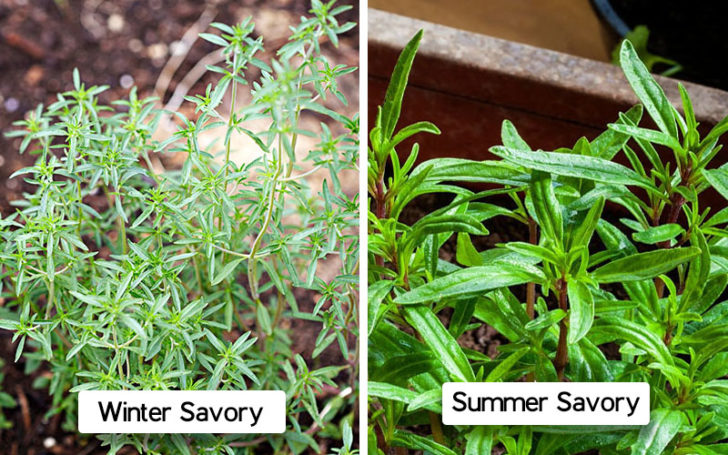
It is another addition to the mint family, a low-growing herb close to Thyme and Rosemary. It is native to the Eastern Mediterranean and the Caucasus. It is used in the preparation of heavy meat dishes.
Summer brine is sweeter than winter brine. So, summer salted marjoram is the closest substitute. But this does not mean that the winter aroma cannot be used.
It tastes peppery with notes of marjoram, thyme and mint.
When using salty as an alternative to marjoram, two factors are considered – the type of flavor you want in your food; and the presence of the salty species.
How Much Sage Is Required as a Marjoram Substitute?
If you use summer salt, an amount of marjoram is sufficient; however, if you are using winter salt, it is recommended to use a little less because of its bitter taste.
8. Za’atar
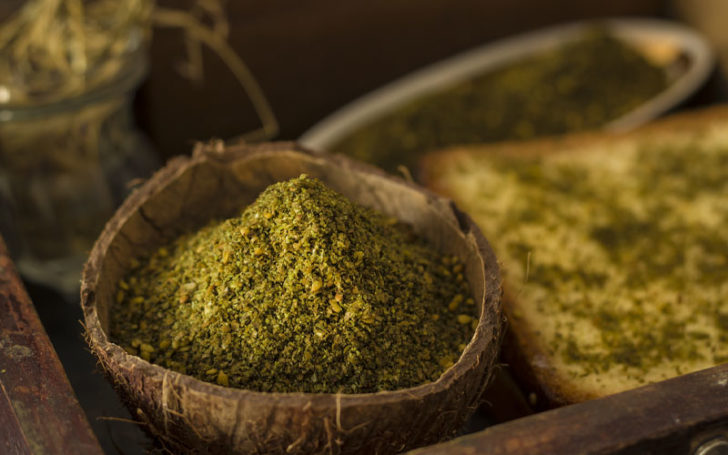
It is one of the popular spice mixes found in the middle east today. It contains many spices, including savory, thyme, roasted sesame, dried sumac, and marjoram.
It is often used to flavor meat and vegetables mixed with olive oil. The taste of Zaatar is nutty, toasted, herbal, woody, citrus and spicy. It is a blend of floral thyme and mild thyme aromatic properties.
Zaatar is an herb, a combination of sumac and sesame seeds. Herbs can be thyme, oregano or marjoram, or a mixture of these. For this reason, Zaatar is one of the best spices to replace marjoram.
How Much Craft Is Required As Marjoram Substitute?
It is recommended to use less than marjoram due to its peanut and toast flavors. If your recipe calls for a teaspoon of marjoram, start with half a teaspoon of Zaatar and gradually increase the amount.
Do You Know?
Marjoram means “Joy of the Mountains” in Greek. Ancient Greek believed if the planted marjoram grows well on the grave, it means the soul was happy in the next world.
Health Benefits of Marjoram
The health benefits of marjoram spice or herbs include:
- Marjoram contains vitamins A and K, one of the essential vitamins for the body.
- It contains plenty of potassium, which helps regulate blood pressure.
- A handsome amount of Maganese helps the nervous system to function properly.
- Marjoram is rich in dietary fiber, which aids in bowel movement.
- One hundred grams of dried marjoram provides more than 1100 KJ of energy – a lot from a single source.
- It is lower in sugar, i.e. only 4.1% of 100 grams of marjoram daily intake.
- The salt content is lower, ie 0.08% of 100 grams of marjoram daily intake.
Where can you find Marjoram?
Cultivated around the Mediterranean, marjoram is native to southwest Asian and North African countries. Popular countries include England, Southern Turkey, Cyprus, South American countries, United States and India.
How to Choose the Substitute for Marjoram?
Backups are usually chosen when you can’t find it. That’s why the alternatives need to be the closest match that doesn’t make a big difference in taste or are expensive or hard to find.
Now questions arise such as how do we know whether to use dried grass or fresh grass. Logical. If you are cooking for a long time, dried is better, and on the other hand, if you are not cooking for a long time or just want to garnish your food, fresh is the best choice.
A Recipe with the Best Marjoram Substitute
Now you have an overview of what can replace marjoram; It’s time to learn at least one recipe that includes the use of marjoram, but it works best if we replace marjoram with any substitute. Then let’s go.
Fresh marjoram substitute for soup
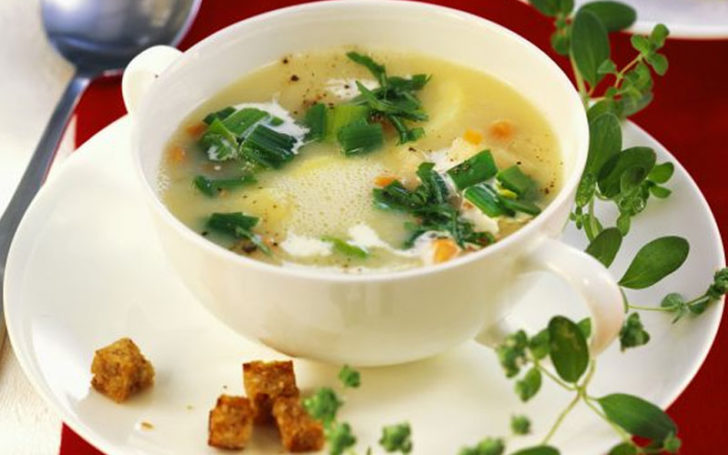
Soup is everywhere in winter. Chicken, corn, vegetable or other kinds of soup; It needs some embellishment and herbal ingredients to enhance the taste. Marjoram is one of them, thanks to its richness in minerals and its aromatic scent. If you don’t have marjoram, a substitute for marjoram in pea soup or another soup like the one below is perfect.
So, here’s the recipe.
Contents:
- Thyme or any marjoram substitutes such as Thyme
- Two eggs
- Salt
- Black pepper
- 250 grams of parmesan
Method
First, chop your marjoram substitute and grate the parmesan. Now whisk two eggs in this mixture and add half a teaspoon of salt and 1/4 teaspoon of black pepper into it. Then boil 6 glasses of water and add this egg mixture into it. Then continue mixing slowly until it reaches a creamy consistency. It is ready to be served.
Conclusion
Many herbs and spices, including the eight famous and closest matches described above, can replace marjoram in your favorite recipe. The only thing you need to pay attention to is how much you should use. Thyme is the best alternative to use, and if thyme is not available, you should only look for the rest of the seven options.
Also, don’t forget to pin/bookmark and visit our blog for more interesting but original information.


I read the whole article without getting bored.. I think it’s a great article